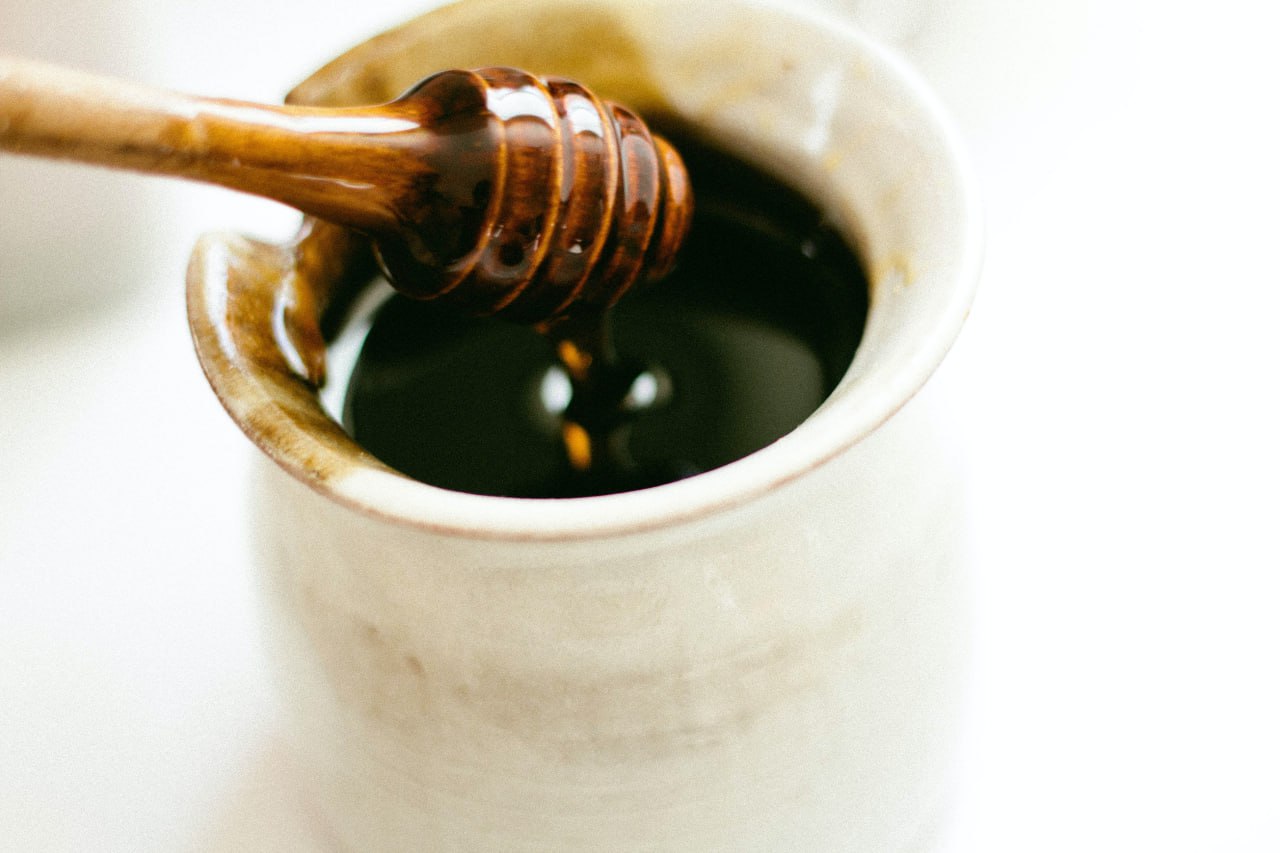
- Readers Rating
- No Rating Yet!
- Your Rating
When we think of bee products, honey is the first thing that comes to mind. However, the world of bees offers a range of culinary treasures that go far beyond honey. Bee pollen, royal jelly and propolis are unique ingredients that bring flavour, health and versatility to the kitchen. In this article, we will explore these products of the hive and show you how to incorporate them into a variety of recipes, from desserts and drinks to savoury dishes, revealing their potential to enrich your culinary experiences.
I. Bee Pollen: A Nutritious and Crunchy Touch
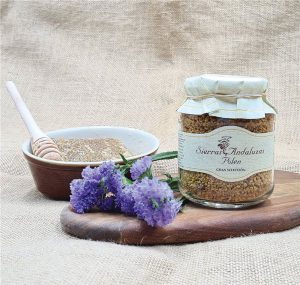
Bee pollen is known to be one of nature’s most complete foods, packed with protein, vitamins, minerals and antioxidants. It is essential to the life of bees and has been prized for centuries for its health benefits. Here is a recipe and details on how to use it:
Bee Pollen: A Nutritional Marvel
Bee pollen is one of the most complete and nutritious products that come from the hive. Bees collect pollen from flowers and transport it back to the hive, where it is stored as a food source rich in protein, vitamins, minerals and antioxidants. It is not only a treasure for the bees, but also a versatile and healthy ingredient that you can incorporate into your cooking.
Bee Pollen Nutritional Properties
Bee pollen is known for its impressive nutritional profile. It contains a wide range of essential nutrients, including:
- Protein: Bee pollen is an excellent source of protein, making it a valuable component in the diet of vegetarians and vegans.
- Vitamins: Contains a variety of vitamins, including B vitamins, vitamin C, vitamin E and vitamin A.
- Minerals: Bee pollen is rich in minerals such as calcium, magnesium, potassium and zinc.
- Antioxidants: The antioxidants present in bee pollen can help fight free radicals and protect the body against cell damage.
- Essential fatty acids: It contains omega-3 and omega-6 fatty acids, which are beneficial for heart and nervous system health.
- Amino acids: Bee pollen provides all the essential amino acids, making it a complete protein source.
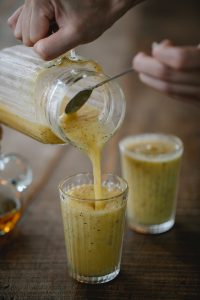
Recipe: Bee Pollen Energy Smoothie
Bee pollen is a versatile ingredient that can be added to a variety of recipes. Here’s an energy smoothie recipe that harnesses the benefits of bee pollen and offers a delicious energy boost.
Ingredients:
- 1 ripe banana
- 1 cup Greek yoghurt
- 1 tablespoon of bee pollen
- Honey to taste
- A handful of nuts
- Ice (optional)
Instructions:
- Blend banana, yogurt, bee pollen and honey in a blender.
- Add ice if desired and blend to a smooth consistency.
- Serve in a glass and sprinkle the nuts and a little bee pollen on top.
This smoothie is a burst of energy and flavour. The bee pollen adds a touch of crunch and a slightly sweet taste, while the banana and yoghurt provide the creaminess and freshness. It’s a delicious way to start your day with a nutritional boost.
Greens Salad with Bee Pollen and Honey Vinaigrette
Bee pollen can also be sprinkled on salads for a crunchy, nutritious touch. Try a mix of fresh greens, walnuts and goat cheese with a honey vinaigrette for a balanced and delicious salad.
II. Royal Jelly: Queen’s Elixir
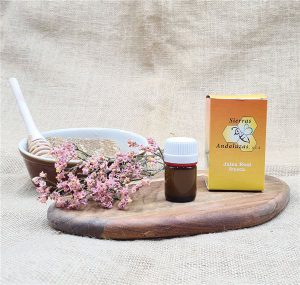
Royal jelly is a unique bee product used to feed queen bee larvae. It is known for its nutritional content, which includes B vitamins, minerals and essential amino acids. In addition to its health benefits, royal jelly adds a mild, sweet taste to recipes. Here is a recipe that incorporates it:
Royal Jelly: Treasure from the Hive
Royal jelly is a treasure from the hive used to feed queen bee larvae, and is prized for its nutritional value and potential health benefits. It is a thick, milky substance that bees produce from flower nectar and contains a variety of nutrients, including B vitamins, minerals, amino acids and antioxidants.
Nutritional Properties of Royal Jelly
Royal jelly is noted for its impressive nutritional profile, which includes:
- Vitamins: It contains a wide range of vitamins, including B-complex vitamins (such as niacin, riboflavin, thiamin and vitamin B6), vitamin C, vitamin D and vitamin E. These vitamins play a crucial role in various body functions, such as energy production and immune system health.
- Minerals: Royal jelly is rich in essential minerals such as iron, calcium, copper, potassium and zinc. These minerals are important for bone health, heart function and red blood cell formation.
- Amino acids: Contains a variety of essential amino acids, which are the building blocks of proteins. Amino acids are necessary for growth and tissue repair, as well as for the production of enzymes and hormones.
- Antioxidants: Royal jelly contains antioxidants, such as ascorbic acid and ascorbic acid. These compounds help fight free radicals and protect cells from oxidative damage.
- Fatty acids: Royal jelly contains essential fatty acids, such as 10-hydroxydecenoic acid and trans-10-hydroxydecenoic acid, which are beneficial for heart health.
- Enzymes: It also contains enzymes, such as glucose oxidase, which play a role in preserving royal jelly and protecting the hive against bacteria.
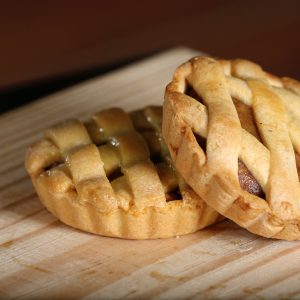
Recipe: Royal Jelly and Forest Berry Cake
Royal jelly has a mild, sweet flavour that makes it ideal for desserts. Here’s a tart recipe that combines royal jelly with berries for an elegant and delicious dessert.
Ingredients:
- Cake base (you can use a pre-made one)
- 200g fresh royal jelly
- 250g mixed berries
- 1 tbsp icing sugar (optional)
Instructions:
- Spread the royal jelly over the pre-made tart base.
- Then arrange the berries on top of the royal jelly.
- Sprinkle a little icing sugar on top if you want an extra touch of sweetness.
This tart is a delicate dessert that brings out the subtle sweetness and unique flavour of the royal jelly. The berries add a touch of tartness and colour, creating a delicious balance in every bite.
III. Propolis: The natural defender
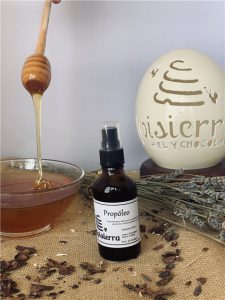
Propolis is a substance that bees collect from plant resins and use to seal and protect the hive. It is prized for its antimicrobial and antioxidant properties. It can also add a complex, slightly bitter taste to recipes. Here is a recipe using propolis:
Propolis: The shield of the beehive
Propolis is a natural compound that bees collect from tree and plant resins to seal and protect the hive. It is also known as “bee glue” because of its sealing function. In addition to its use in the hive, propolis has been prized for centuries for its potential health benefits and versatility in cooking.
Properties of Propolis
Propolis contains a variety of bioactive compounds that confer antimicrobial, antioxidant and anti-inflammatory properties. Some of the most important components of propolis include:
- Flavonoids: These compounds are known for their antioxidant and anti-inflammatory properties. They help protect the body’s cells against oxidative damage and reduce inflammation.
- Phenolic acids: Phenolic acids are another group of antioxidant compounds found in propolis. They contribute to its ability to fight free radicals.
- Essential oils: Propolis contains essential oils that give it a characteristic aroma and flavour. These oils may have antibacterial properties.
- Vitamins and minerals: Propolis may also contain small amounts of vitamins and minerals, such as vitamin B, vitamin C, calcium and zinc.
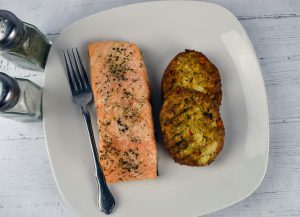
Recipe: Baked Salmon with Propolis Glaze
Propolis brings a distinctive, slightly bitter flavour that pairs perfectly with the salmon in this baked salmon recipe. The propolis glaze adds a unique touch to this fish dish.
Ingredients:
- 4 salmon fillets
- 2 teaspoons propolis powder
- 2 tablespoons honey
- 2 tablespoons olive oil
- Salt and pepper to taste
- Lemon for garnish
Instructions:
- Preheat the oven to 180°C.
- Mix the propolis powder, honey, olive oil, salt and pepper in a bowl.
- Spread this mixture over the salmon fillets.
- Bake for 15-20 minutes or until the salmon is cooked.
- Serve with lemon slices and enjoy a plate of glazed salmon with a touch of propolis.
The propolis glaze enhances the flavour of the salmon and adds a slightly bitter, earthy undertone that perfectly complements the richness of the fish. It is an elegant and delicious choice for a special meal.
Tips for purchasing and storage
By offering tips on where to find and how to select quality hive products, as well as how to store them properly to maintain their freshness and nutritional properties, you can help your readers get the most out of these special ingredients. Here are some general guidelines to keep in mind:
- Buy Bee Pollen: Look for fresh bee pollen at health food shops or farmers’ markets. Make sure it is tightly sealed in an airtight container to maintain freshness. Some bee pollen products are available in capsule or tablet form and can be purchased at health supplement shops.
- Buying Royal Jelly: Fresh royal jelly is harder to find, but some health food shops and local beekeepers may offer it. Make sure it is refrigerated and, if possible, buy from reputable suppliers. Royal jelly is often found in small bottles or capsules.
- Buy Propolis: Propolis can be found in liquid or tablet form in health food shops and online shops. Be sure to read labels and select quality products. Some people may prefer propolis in tincture form, which is mixed with water for consumption.
- Storage: Most hive products should be stored in a cool, dark place. Fresh royal jelly and bee pollen should be kept in the refrigerator. Liquid propolis products usually keep well at room temperature. Always check the storage instructions on the packaging of the product you buy.
Conclusion
The products of the hive are true culinary treasures that offer not only taste, but also health benefits. From bee pollen that brings a crunchy and nutritious touch, to royal jelly with its subtle sweetness, to propolis with its bitter complexity, these unique ingredients can enrich your recipes and provide you with an exceptional culinary experience. Dare to explore beyond honey and enjoy the gifts of bees in your kitchen!
Remember: The variety and versatility of bee products allow for a wide range of culinary applications. From energising smoothies to elegant tarts and glazed fish dishes, these special ingredients can take your recipes to the next level, adding flavour and health benefits – enjoy culinary exploration and discover how bee products can enrich your cooking!
On our mentta blog you can find all kinds of articles about nutritional tips, recipes or gastronomic curiosities. Don’t miss out and visit our blog.
